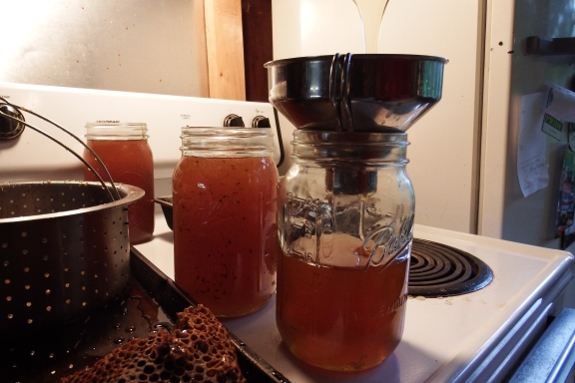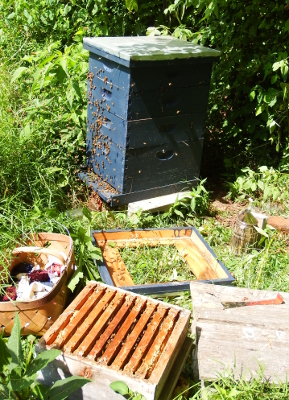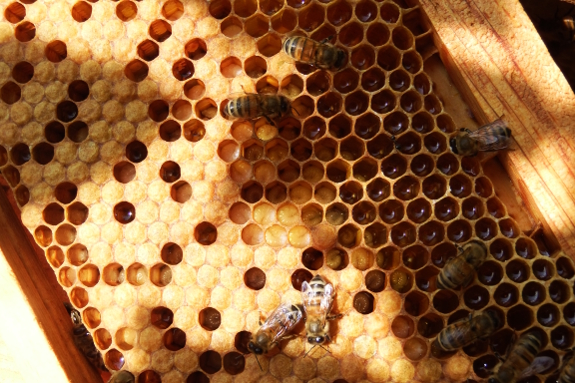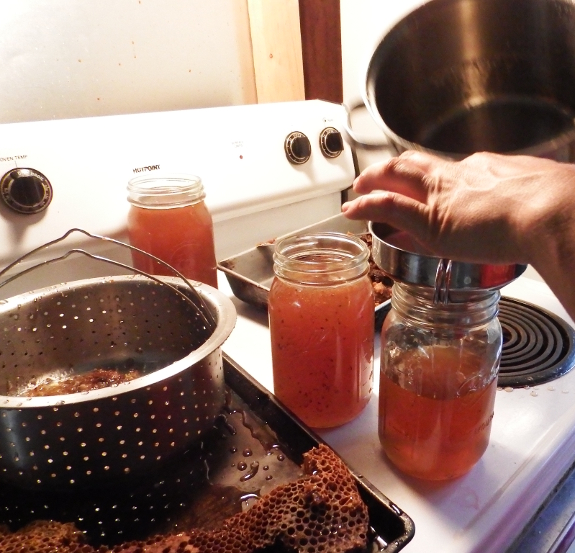
Harvesting honey from a Warre hive

 As Mark mentioned yesterday,
we finally harvested honey for the first time in six
years. The long-time
reader might assume that means my
conversion back to Langstroth hives while keeping my chemical-free
strain of bees going was just what the doctor ordered. And you
wouldn't necessarily be wrong...but you wouldn't necessarily be right
either.
As Mark mentioned yesterday,
we finally harvested honey for the first time in six
years. The long-time
reader might assume that means my
conversion back to Langstroth hives while keeping my chemical-free
strain of bees going was just what the doctor ordered. And you
wouldn't necessarily be wrong...but you wouldn't necessarily be right
either.
The jury's still out on
which hive system makes more honey because I harvested about the same
amount from both the primarily Langstroth hive and from the Warre hive.
In both cases, the honey overload is due to an excellent nectar season
that culminated in our basswood blooming fully for the first time in
nearly a decade. Lots
of nectar makes lots of honey, regardless of the type of hive.

So how much honey did I
take? It's complicated. Initially, I planned to harvest the one
remaining Warre box on top of our converted hive since I'd found lots
of brood and eggs lower down on Langstroth frames and knew the queen
had vacated the attic. But once I got that box home and started pulling
out the frames, I discovered that there was still brood at the bottom.
So I harvested three full frames of honey and went to put the Warre box
back with its brood intact.
But I really wanted to
call that conversion complete, so I put the box back on the other hive
instead of the one I originally took it from. And while I was in there,
I discovered that the Warre hive had a very full box of capped honey as
well as at least two other quite heavy boxes. So I snagged the former
rather than towering their living quarters over my head.

To cut a long story
short, I think I ended up harvesting about 1.3 Warre boxes in the end.
Rather than going high-tech, I simply squeezed each frame into a
strainer and ended up with about 2.5 gallons of honey. A very sweet
reward after years of trial and error!
Want more in-depth information? Browse through our books.
Or explore more posts by date or by subject.
About us: Anna Hess and Mark Hamilton spent over a decade living self-sufficiently in the mountains of Virginia before moving north to start over from scratch in the foothills of Ohio. They've experimented with permaculture, no-till gardening, trailersteading, home-based microbusinesses and much more, writing about their adventures in both blogs and books.
Want to be notified when new comments are posted on this page? Click on the RSS button after you add a comment to subscribe to the comment feed, or simply check the box beside "email replies to me" while writing your comment.
- Remove comment
- Remove comment
 (The photos are from the first round of squeezing only.)
(The photos are from the first round of squeezing only.)
- Remove comment
- Remove comment
